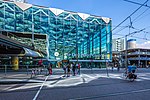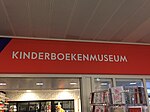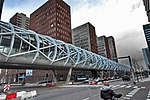Meadows near Rijswijk and the Schenkweg

Meadows near Rijswijk and the Schenkweg is a watercolor by the Dutch painter Vincent van Gogh that he made in January 1882, shortly after taking up residence in The Hague.It shows the view from his studio window on the outer reaches of The Hague at the Schenkweg, then undergoing a period of urban development. The view is across the Schenkweg ditch towards the newly constructed Rijnspoor railway station, built for the Utrecht-Gouda-The Hague railway, and now the Den Haag Centraal railway station. Rijswijk was then a small rural community to the south, bordering Delft but stretching all the way to The Hague. The land on which the Rijnspoor was built was ceded to The Hague by Rijswijk. It is now a suburb of The Hague. The painting is amongst the very first paintings by van Gogh. Although he had been drawing for many years and occasionally applied watercolor washes, he did not take up painting proper until his study visit to his cousin-in-law and mentor Anton Mauve at The Hague in December 1881.
Excerpt from the Wikipedia article Meadows near Rijswijk and the Schenkweg (License: CC BY-SA 3.0, Authors, Images).Meadows near Rijswijk and the Schenkweg
Hendrick Hamelstraat, The Hague Haagse Hout
Geographical coordinates (GPS) Address Nearby Places Show on map
Geographical coordinates (GPS)
| Latitude | Longitude |
|---|---|
| N 52.078441 ° | E 4.329637 ° |
Address
Hendrick Hamelstraat 22
2595 XN The Hague, Haagse Hout
South Holland, Netherlands
Open on Google Maps










